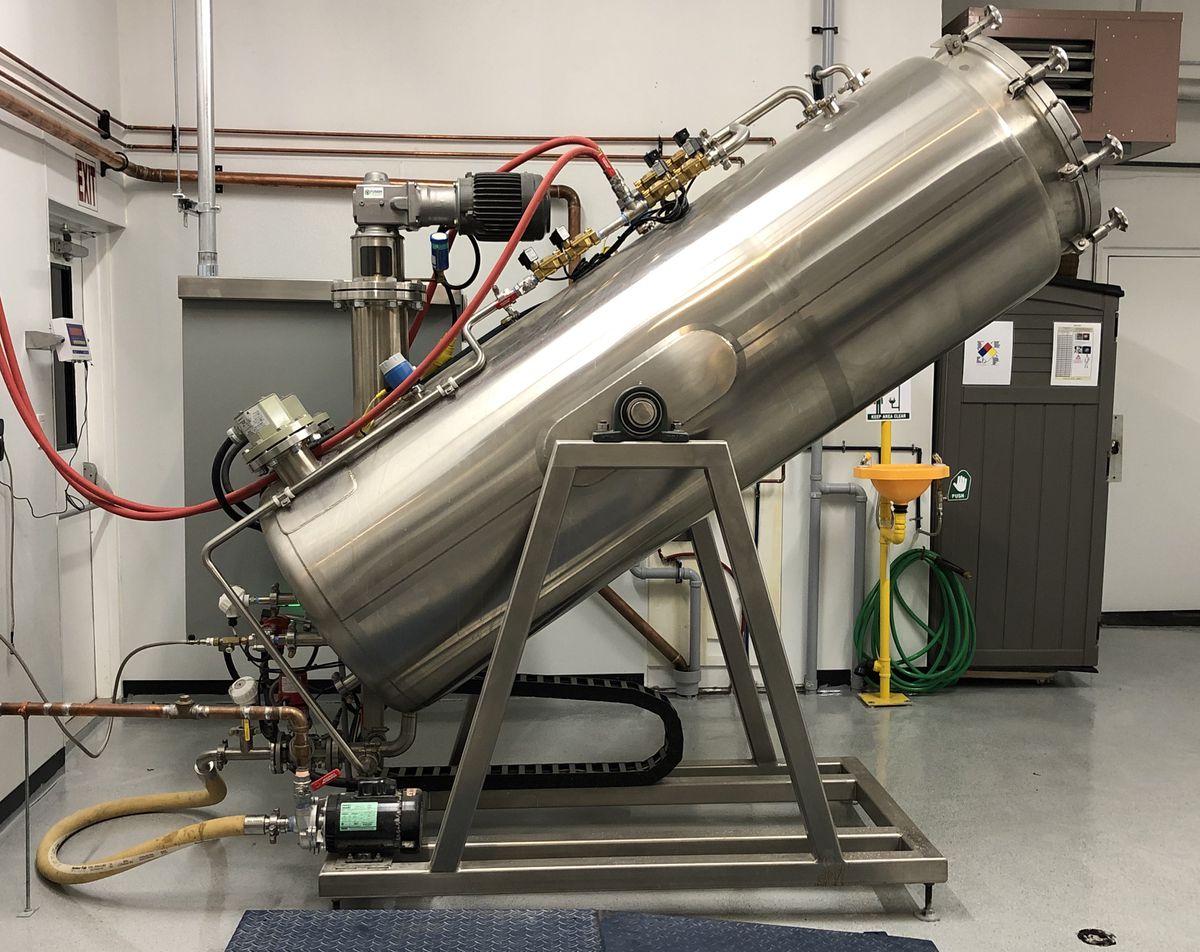Charbonneau vs. the BAO: Chapter Two of the Battle for Low-Temp Bio-Cremation
Trevor Charbonneau’s battle to bring low-temperature alkaline hydrolysis (LT AH) to Ontario reads like a bad novel with a looping plotline. Protagonist Charbonneau has a dream to innovate and offer new options to families in his community. However, the antagonists in this story — the Bereavement Authority of Ontario (BAO) — counter him at every turn. They consistently present our hero with new and different barriers to surmount. Every time it seems victory is within Charbonneau’s grasp, it’s ripped away and replaced by a new challenge.
Will Charbonneau’s quest ever end? Will he ever make it through the gauntlet and emerge victoriously with the BAO’s approval for LT AH? Has our hero spent three years and hundreds of thousands of dollars for naught? And will the antagonists’ true motivation ever be revealed? That part of the story is still unwritten.
The first few chapters
Connecting Directors first shared Charbonneau’s story in December with a timeline detailing his confounding quest. In late 2017, funeral director Charbonneau received a crematorium license from the Bereavement Authority of Ontario and approval from his local Planning and Development Committee to offer bio-cremation at Newcastle Funeral Home in the Durham region of Ontario.
In 2018 the BAO, led by registrar Carey Smith, abruptly suspended Newcastle’s license. This would happen two more times in 2018 and 2019. Charbonneau appealed the decision to a tribunal court each time, and each time, he won. However, twice he was forced to shut down his equipment during the tribunals’ months-long deliberations. As of this writing, though, Newcastle’s LT AH equipment is operating as they await the tribunal’s decision on the BAO’s final appeal.
Bio-cremation regulations recently announced
The BAO welcomed 2020 with an update to its Funeral, Burial and Cremation Services Act of 2002. The new version added definitions and long-awaited requirements for “Alternative Disposition Operator — Hydrolysis.” One might think this, along with the tribunal’s multiple decisions in Charbonneau’s favor, would pave the way for LT AH for all … but one would be wrong. The problems begin with the body responsible for creating the requirements.
According to Charbonneau, the Ministry of Government and Consumer Services, which oversees the BAO, made a commitment to include AH operators and stakeholders in the creation of these guidelines. However, Charbonneau says, none were invited or involved.
“[The requirements] were put together by people who have no experience with AH,” says Charbonneau. “The advisory committee of the BAO has flame cremation people on it, [but] nobody with experience or an interest in AH.”
The Cemetery, Crematorium & Municipal Advisory Committee to which Charbonneau refers is composed of nine members:
- Six (6) members that reflect the views and concerns of cemetery operators
- Two (2) members that reflect the views and concerns of crematorium operators
- One (1) consumer representative
The two members representing crematorium operators are Kirby Butler of Southwest Crematoriums, Ltd. and Glen Timney of Mount Pleasant Group. Timney is the committee’s chairperson and serves on the Board of Directors of the BAO. Both Southwest and Mount Pleasant offer flame-only cremation services.
BAO: No low temperatures
Charbonneau pointed out several other aspects of the new regulations that seem to fly in the face of the tribunal courts’ rulings. First and foremost is the BAO’s insistence on allowing only high-temperature AH. The fourth requirement in the document reads:
The Licensee shall ensure that the alkaline hydrolysis process is operated within the following parameters: temperature above 149C (“>149C) and minimum concentration of 1 N sodium hydroxide and/or potassium hydroxide solution for at least 3 hours.
As low-temperature AH equipment operates at 92.5 to 97.8 degrees Celsius, it doesn’t meet the BAO’s minimum requirement. This item is listed under the document’s “Public Health, Safety & Dignity” section.
“We have had three courts rule in our favour and say that low-temperature AH does not pose a risk to public health and safety,” says Charbonneau. He cites one of many court documents in which the tribunal court stated “the risk of harm identified by the registrar is speculative and highly unlikely to occur.”
Contradictions and curious additions
The guidelines include other contradictions to the courts’ findings as well as several curious additions above and beyond what’s required for flame cremations. For example, consider requirement number 20:
The Licensee will obtain a Pre-Start Health and Safety Review by a Professional Engineer, Certified Industrial Hygienist, Registered Occupational Hygienist or similarly qualified person.
Charbonneau says the Ministry of Labour in Ontario, which oversees Pre-Start Health and Safety Reviews, said these $12,000 reviews usually only apply to factories, and do not apply to funeral homes, flame crematoriums, or AH facilities.
Another contradiction — this time to the LT AH equipment manufacturer’s own recommendation — is found in item 14a:
Hydrolysis chambers must be equipped with a system to prevent any operation of the hydrolysis chamber below the minimum parameters (temperature (>149°C), high pressure (4 atm) and high pH (using sodium hydroxide or potassium hydroxide in solution) for at least 3 hours.
The BAO’s requirement of ensuring a three-hour minimum operation time for any AH. This is much lower than the six- to eight-hour manufacturers’ recommendations for low-temperature AH, but exceeds the two- to three-hour cycle of high-temp machines.
Omissions and oversights
There are also some relatively obvious omissions or oversights in the document. Take number eight, which addresses disposal of hydrolysate, the “liquid solution containing the organic products” of hydrolysis:
Hydrolysate may only be disposed of into the municipal wastewater system in accordance with municipal approvals and requirements.
Charbonneau brings up a great point about rural communities. “This rule does not take into consideration facilities that may be on a septic system as opposed to municipal water waste,” he says.
Lack of expert opinions
Lastly, at least two of the document’s 36 requirements raise questions as to why had the committee didn’t consult actual alkaline hydrolysis experts or operators.
(3) The Licensee shall ensure that every dead human body is enclosed in a hydrolysis wrapping prior to and during hydrolysis.
(22e) Floor in the facility must be connected to a secondary containment tank, berm, tray, sump or other structure to contain spills. Floor drains must be blocked during the hydrolysis process to prevent the introduction of hazardous substances into the wastewater system.
Charbonneau’s concerns with these two items involve quality and safety. The BAO’s requirements for the wrapping allow only protein-based materials including 100% silk, wool, leather, suede, or fur. According to Charbonneau, these materials are “not leakproof, their use increases worker exposure to the deceased, and they add a huge cost for the family.” He questions why these wrappings are required when a highly-trained professional is handling a body as they would with any other disposition.
Also, a secondary structure sounds like a reasonable precaution against spills. However, use of a tray would submerge electrical components on the bottom of the equipment. This could present a risk of shock.
“I agree that a spill plan is necessary,” says Charbonneau. “But their solutions for trays or sump pumps is not the best way to go about this.”
Too many questions, not enough answers
In its November 2019 issue, Canadian Funeral News included an op-ed by publisher Pat Ottman. Entitled “Save Us,” the article begins, “Thank God for the Bereavement Authority of Ontario (BAO) in coming to the rescue of poor unsuspecting consumers in their desire to have alkaline hydrolysis […] as their final disposition.”
In his piece, Ottman questions the motivations of the BAO in its continued attempts to bar low-temperature alkaline hydrolysis. “I usually try to follow the money in anything I can’t understand from a purely logical point of view,” Ottman writes. “In this case, there doesn’t appear to be any money to follow. We are just seeing the overbearing arm of government bureaucrats imposing a ton of pain on independent business people.”
Ottman also calls out the various peculiar and contradictory statements made by BAO registrar Carey Smith, a former police officer whose most recent previous occupation was Director of Investigations at the Ontario Motor Vehicle Industry Council. “Perhaps searching for relevance — and if consumer protection doesn’t work — let’s ratchet this up a little under the heading of public safety as Carey Smith, Ontario’s registar, told the Ottawa Citizen a few months back.”
What’s next for Charbonneau and the BAO?
Ottman closes with this profound observation: “Regulating ‘what-ifs” into near hysteria is not only bad policy,” he writes. “It cheats the consumer of choice and damages the business providing these services.”
Charbonneau can certainly attest to that. He’s spent over $300,000 to fight the BAO’s rulings. He’s lost even more in revenue during the 13 months his LT AH operation was shut down. If the BAO’s new regulations are enforced, he’ll once again have to stop offering LT AH, despite its growing popularity.
However, one thing’s for sure. Our hero won’t stop fighting this story’s antagonist. No matter how long it takes or how many battles he has to fight, Charbonneau will find an end to this tale. We only hope it’s a happy ending.
Epilogue
On January 16, Charbonneau shared the disappointing, yet unsurprising, news that the BAO can move forward with their final appeal. The court offered no explanation for their decision. Despite the continued stress and mounting legal fees, Charbonneau is carrying on.
“We will continue to operate in the meantime. It will probably be a few months before we get a court date,” he said. “I was hoping this was coming to an end, but I’m not so lucky.”
In the meantime, Pat Ottman has also published a new op-ed in the January 2020 edition of Canadian Funeral News. Referring to an author-redacted email entered into evidence during the appeal, Ottman likens the situation to the Mueller inquiry. He encourages readers to read the ruling, which he posted on his website, paying special attention to the bottom of page six, and form their own opinions.
“[O]ne really has to question the efforts to shut this one operator down,” Ottman writes. “In my opinion, somthing does stink in this whole thing.”




